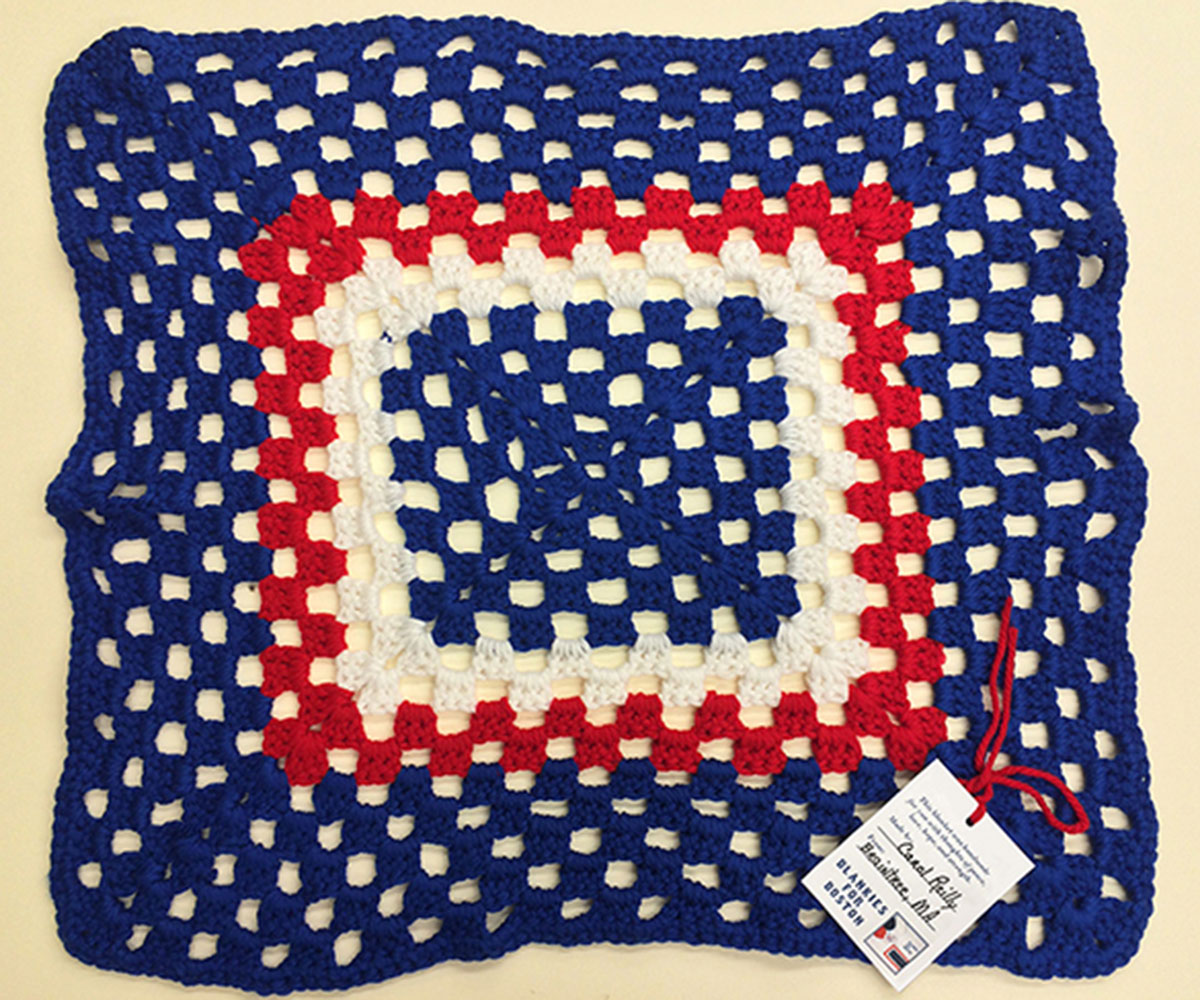Harvard Library Is Documenting Boston Marathon Medical Mementos

This hand-crocheted blanket was made by a member of Blankies for Boston and sent to Brigham and Women’s Hospital after the Boston Marathon bombing. Image provided by Harvard University.
While Iron Mountain is sorting and documenting the thousands of items left at the makeshift Boston Marathon memorial in Copley Square last year, Harvard’s Countway Library is collecting the thousands of photographs, cards, oral histories, and other materials that were sent to Boston’s medical professionals.
Harvard reps say that the project is capturing, digitizing, and archiving the stories, materials, and condolences received by the medical professionals who saved countless lives following the Boston Marathon bombings. The name of the project is “Strong Medicine” and it’s being run by the library’s Center for the History of Medicine in collaboration with Our Marathon at Northeastern University. The archive is an effort to build a permanent record for researchers and historians. Some examples of items collected include:
- A letter sent from a 10-year-old amputee to patients at Brigham and Women’s who lost limbs.
- Hand-crocheted blankets that Blankets for Boston sent to patients.
- Recorded interviews with medical professionals on what they experienced immediately after the bombing and following.
- Get well cards from children and classrooms from across the country.
Kathryn Hammond Baker, deputy director of the Center for the History of Medicine tells the Harvard Gazette that this is a unique moment. “People’s experiences are so vivid and strong, the medical community was so engaged with the public, and was so committed,” she said, adding that the archive, which encourages self-submissions of materials via its website, is an opportunity “for the public to really get a glimpse into what medicine is on the ground floor when it’s all happening.”
According to the Gazette:
In one of the archive’s many interviews with members of the local medical community, Alasdair Conn, then the chief of the department of emergency medicine at MGH, details the hospital’s response and explains how an alert system notified approximately 1,000 people connected to the hospital about the bombings. As part of the MGH plan, staff from other departments helped clear the emergency room of patients, freeing up beds for bombing victims. Conn also recounts how doctors and nurses calmly came together to save lives.
Organizers are hopeful that people will continue to submit materials to the archive in the coming weeks and months. The difference between this collection and others is that it focuses on the medical community and the efforts they made to save countless lives. The collection will be an important reminder in the years to come for young medical professionals to remember what their colleagues did and how so many lives were affected across the world.

